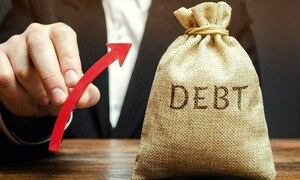There are talks of another mini budget somewhere later this month. A lot of it is to do with the FBR lagging behind the tax collection target – and tax on petroleum products have a fair say in the overall scenario. The near 5 percent reduction in retail prices of both petrol and diesel in January 2019 will yield more than double the revenue on petrol, and one-fourth higher on diesel – in comparison to the previous month.
The international oil prices may well be significantly lower than last year, but the rupee slide in the meanwhile has changed the equation a great deal. The government has for the first time in six months imposed the standard 17 percent GST on petrol – which averaged 7 percent from Aug-Dec, despite lower international oil prices. The rupee slide has made it difficult for the government to pass on the full impact, especially when on the higher side. Surprisingly, the government has opted to use the GST route for pocketing in petroleum revenue – when the easier option of using Petroleum Levy – which is not to be shared with the provinces that is there. Recall that the Finance Act now allows the government to charge up to a maximum of Rs30/litre on account of PL, on both petrol and diesel, should the government wish.

With international oil prices hitting new lows and no immediate threat of massive rupee depreciation – next month is going to present itself with an opportunity, to either partially pass on or completely withhold the benefit to the end consumers – without even increasing the end price.
Recall that the Finance Minister was openly critical of the previous government for not passing on the entire benefit to end consumers. The ball will soon be in his court – and he has several levers to play around with. He can increase the GST and still decrease the price, can increase the PL, maintain the current GST – and still maintain the price. But that would, in essence mean, eating up on the consumer benefit.
So far, the estimated tax collection on two key petroleum products, petrol and HSD, has been lower by 35 percent from 7MFY18, at Rs126 billion. Mind you, nearly 38 percent of domestic sales tax comes from petroleum products. Had the government not taken a hit earlier and maintained the GST at 17 percent on petrol, the GST on petrol would have been Rs68 billion instead of Rs40 billion estimated to have been collected in 7MFY19.
It remains to be seen whether Asad sticks to his earlier criticism, or seizes the opportunity to make some easy revenue, without increasing the consumer price. February will tell.





















Comments
Comments are closed.